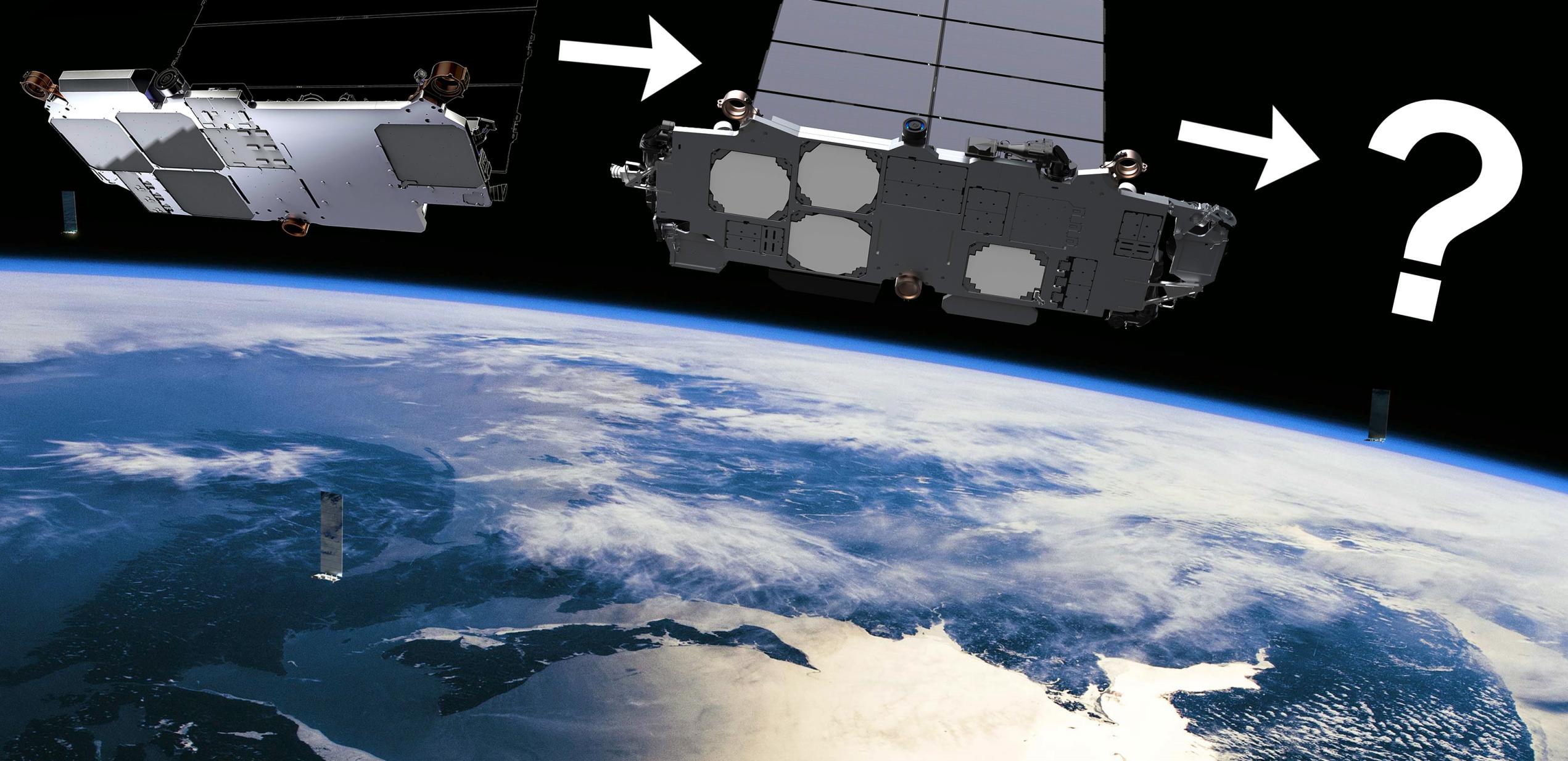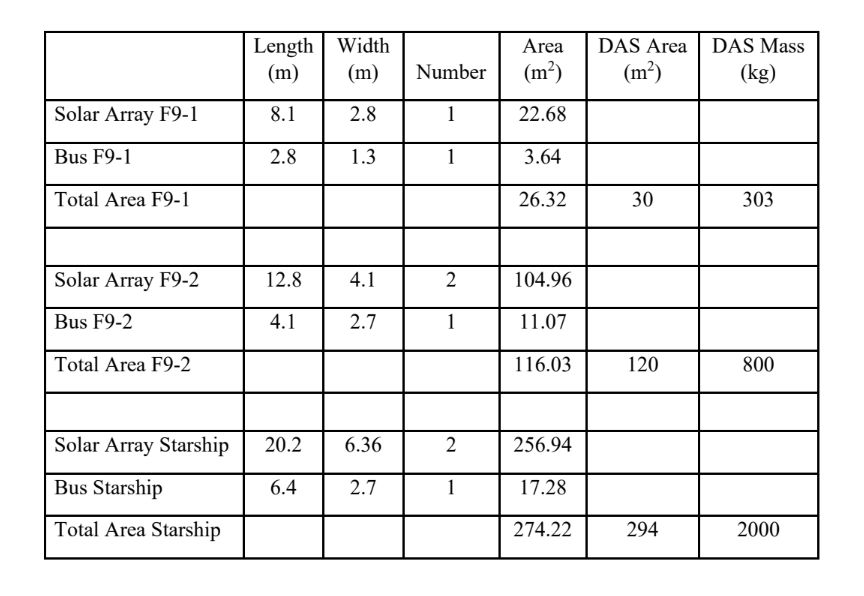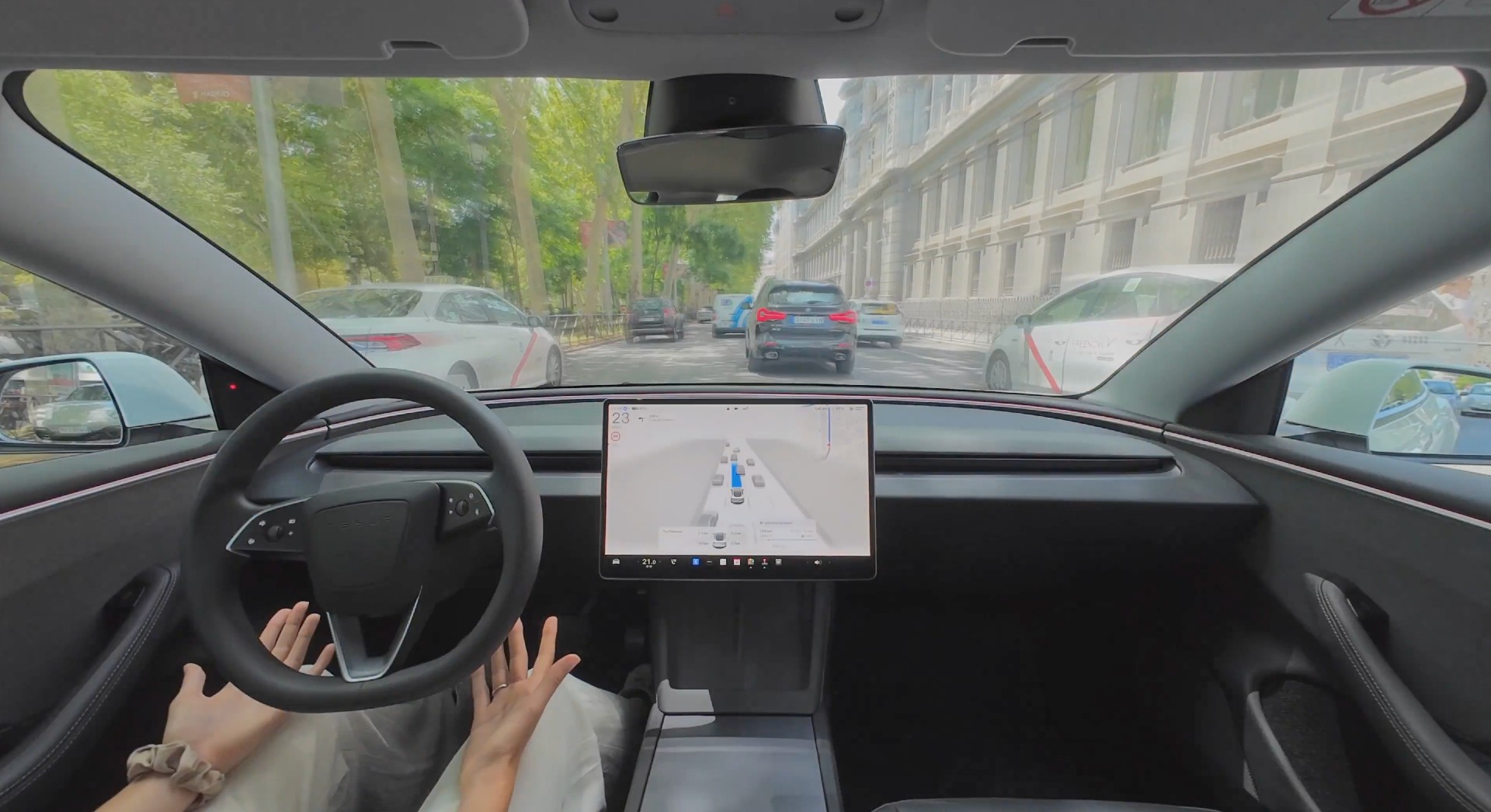

News
SpaceX might launch first Starlink Gen2 satellites next week
Update: It no longer appears that SpaceX’s last Starlink launch of the year will carry true V2 or V2 Mini satellite prototypes for its next-generation Starlink constellation. That has only deepened the layers of mystery surrounding the mission.
SpaceX has told the US Federal Communications Commission (FCC) that it plans to begin launching its first next-generation Starlink Gen2 satellites before the end of 2022.
The FCC only just granted SpaceX partial approval of its Starlink Gen2 constellation, which has been under review since May 2020, in late November 2022. Just a week or two later, in several filings asking the FCC to expedite Special Temporary Authority (STA) requests that would allow it to fully test and communicate with its first next-generation satellite prototypes, SpaceX said [PDF] that it “anticipates that it will begin launching Gen2 satellites before the end of December 2022.”
The update that's rolling out to the fleet makes full use of the front and rear steering travel to minimize turning circle. In this case a reduction of 1.6 feet just over the air— Wes (@wmorrill3) April 16, 2024
In most of the main STA requests filed in early December, SpaceX appears to be asking the FCC to add Starlink Gen2 satellites as approved points of communication for user terminals and ground stations that are already licensed. Those include its new high-performance dishes, newer base-model dishes (both fixed and in motion), and first-generation (round) dishes. While the FCC’s recent actions on Starlink do not raise confidence in its consistency, objectivity, and rationality, these requests should be shoe-ins.
SpaceX also wants permission to activate Very High Frequency (VHF) beacons that are meant to be installed on all Starlink Gen2 satellites. Those beacons would serve as a backup to existing telemetry, tracking, and command (TT&C) antennas and decrease the odds of a total loss of control by ensuring that SpaceX can remain in contact with Gen2 satellites regardless of their orientation – an ability that would obviously improve the safety of Starlink orbital operations.
Given how unusually long it took the FCC to review SpaceX’s Starlink Gen2 applications and how arbitrarily strict it was with its partial Gen2 license grant, it’s hard to say if the FCC will grant these STA requests or how long it will take if it does. SpaceX finds itself in a strange position where the FCC has given it permission to begin launching up to 7500 Starlink Gen2 satellites, but has not granted SpaceX permission to use those satellites to communicate with user terminals.
To the FCC’s credit, a constellation operator has never been ready to launch satellites less than one month after launches were approved, and it’s likely that the processes to ensure those satellites can be properly used after launch are ongoing. Additionally, because of the FCC’s arbitrary license restrictions, SpaceX is not allowed to launch or operate any Starlink Gen2 satellites outside of a narrow range of altitudes (475-580 km). After launch, Starlink Gen2 satellites will likely take around two or three months to reach those operational orbits, only after which can SpaceX begin using them in earnest. As long as the FCC approves most of SpaceX’s December 2022 STA requests, the disruption to Starlink Gen2 deployment and on-orbit testing should thus be limited.
Next week?
While SpaceX’s schedule targets can often be easily dismissed for future projects, there is evidence that SpaceX will actually attempt to launch the first Starlink Gen2 satellites before the end of the year. Earlier this month, SpaceX received permission to communicate with a Falcon 9 rocket for a mission called Starlink 5-1. One of five orbital ‘shells’ that make up SpaceX’s first-generation Starlink constellation does technically have zero satellites and is awaiting its first launch. But that shell (Group 5) is polar, meaning that its satellites will orbit around Earth’s poles, and the STA license the FCC granted indicates that this launch will be to a more equatorial inclination, which would not make sense for a Group 5 launch.
It’s thus possible that SpaceX decided to repurpose the STA for its first Starlink Gen2 launch, which the company cannot currently launch to an inclination other than 53 degrees – roughly the same trajectory indicated by the document. Starlink Gen1 has two 53-degree shells, Group 1 and Group 4, and both are nearly complete and would likely be called Starlink 1-XX or 4-XX in FCC filings. Combined with SpaceX stating in its VHF beacon STA request that initial Starlink Gen2 launches will start in “late December 2022,” and unofficial manifests indicating that SpaceX has a Starlink launch scheduled as early as December 28th, it certainly appears that first Gen2 satellites will reach orbit later this year.

More likely than not, they will be Starlink “V2 Mini” satellites – a downsized variant created to maximize the efficiency of Falcon 9 Starlink Gen2/V2 launches while SpaceX’s next-generation Starship rocket remains stuck on the ground. The Starship-optimized Starlink V2 satellites SpaceX initially hoped would be the only version reportedly weigh about 1.25 tons (~2750 lb) and measure roughly 6.5 by 2.7 meters (21 x 9 ft). According to an October 2022 FCC filing, Starlink V2 Mini satellites will still be several times larger than today’s Starlink V1.5 satellites, weighing up to 800 kilograms (~1750 lb) and measuring 4.1 by 2.7 meters (13.5 x 9 ft).
SpaceX says Starlink V2 Mini satellites will also have a pair of massive solar arrays with a total array of 120 square meters (~1300 sq ft). Assuming V2 Mini satellites are roughly as power-efficient as V1.5 satellites and use similarly efficient solar arrays, that indicates that could offer around 3-4 times more usable bandwidth per satellite. Assuming SpaceX has again found a way to use all of Falcon 9’s available performance, each rocket should be able to carry up to 21 Starlink V2 Mini satellites to low Earth orbit.
Elon Musk
Why Tesla’s Q3 could be one of its biggest quarters in history
Tesla could stand to benefit from the removal of the $7,500 EV tax credit at the end of Q3.

Tesla has gotten off to a slow start in 2025, as the first half of the year has not been one to remember from a delivery perspective.
However, Q3 could end up being one of the best the company has had in history, with the United States potentially being a major contributor to what might reverse a slow start to the year.
Earlier today, the United States’ House of Representatives officially passed President Trump’s “Big Beautiful Bill,” after it made its way through the Senate earlier this week. The bill will head to President Trump, as he looks to sign it before his July 4 deadline.
The Bill will effectively bring closure to the $7,500 EV tax credit, which will end on September 30, 2025. This means, over the next three months in the United States, those who are looking to buy an EV will have their last chance to take advantage of the credit. EVs will then be, for most people, $7,500 more expensive, in essence.
The tax credit is available to any single filer who makes under $150,000 per year, $225,000 a year to a head of household, and $300,000 to couples filing jointly.
Ending the tax credit was expected with the Trump administration, as his policies have leaned significantly toward reliance on fossil fuels, ending what he calls an “EV mandate.” He has used this phrase several times in disagreements with Tesla CEO Elon Musk.
Nevertheless, those who have been on the fence about buying a Tesla, or any EV, for that matter, will have some decisions to make in the next three months. While all companies will stand to benefit from this time crunch, Tesla could be the true winner because of its sheer volume.
If things are done correctly, meaning if Tesla can also offer incentives like 0% APR, special pricing on leasing or financing, or other advantages (like free Red, White, and Blue for a short period of time in celebration of Independence Day), it could see some real volume in sales this quarter.
You can now buy a Tesla in Red, White, and Blue for free until July 14 https://t.co/iAwhaRFOH0
— TESLARATI (@Teslarati) July 3, 2025
Tesla is just a shade under 721,000 deliveries for the year, so it’s on pace for roughly 1.4 million for 2025. This would be a decrease from the 1.8 million cars it delivered in each of the last two years. Traditionally, the second half of the year has produced Tesla’s strongest quarters. Its top three quarters in terms of deliveries are Q4 2024 with 495,570 vehicles, Q4 2023 with 484,507 vehicles, and Q3 2024 with 462,890 vehicles.
Elon Musk
Tesla Full Self-Driving testing continues European expansion: here’s where
Tesla has launched Full Self-Driving testing in a fifth European country ahead of its launch.

Tesla Full Self-Driving is being tested in several countries across Europe as the company prepares to launch its driver assistance suite on the continent.
The company is still working through the regulatory hurdles with the European Union. They are plentiful and difficult to navigate, but Tesla is still making progress as its testing of FSD continues to expand.
Today, it officially began testing in a new country, as more regions open their doors to Tesla. Many owners and potential customers in Europe are awaiting its launch.
On Thursday, Tesla officially confirmed that Full Self-Driving testing is underway in Spain, as the company shared an extensive video of a trip through the streets of Madrid:
Como pez en el agua …
FSD Supervised testing in Madrid, Spain
Pending regulatory approval pic.twitter.com/txTgoWseuA
— Tesla Europe & Middle East (@teslaeurope) July 3, 2025
The launch of Full Self-Driving testing in Spain marks the fifth country in which Tesla has started assessing the suite’s performance in the European market.
Across the past several months, Tesla has been expanding the scope of countries where Full Self-Driving is being tested. It has already made it to Italy, France, the Netherlands, and Germany previously.
Tesla has already filed applications to have Full Self-Driving (Supervised) launched across the European Union, but CEO Elon Musk has indicated that this particular step has been the delay in the official launch of the suite thus far.
In mid-June, Musk revealed the frustrations Tesla has felt during its efforts to launch its Full Self-Driving (Supervised) suite in Europe, stating that the holdup can be attributed to authorities in various countries, as well as the EU as a whole:
Tesla Full Self-Driving’s European launch frustrations revealed by Elon Musk
“Waiting for Dutch authorities and then the EU to approve. Very frustrating and hurts the safety of people in Europe, as driving with advanced Autopilot on results in four times fewer injuries! Please ask your governing authorities to accelerate making Tesla safer in Europe.”
Waiting for Dutch authorities and then the EU to approve.
Very frustrating and hurts the safety of people in Europe, as driving with advanced Autopilot on results in four times fewer injuries!
Please ask your governing authorities to accelerate making Tesla safer in Europe. https://t.co/QIYCXhhaQp
— Elon Musk (@elonmusk) June 11, 2025
Tesla said last year that it planned to launch Full Self-Driving in Europe in 2025.
Elon Musk
xAI’s Memphis data center receives air permit despite community criticism
xAI welcomed the development in a post on its official xAI Memphis account on X.

Elon Musk’s artificial intelligence startup xAI has secured an air permit from Memphis health officials for its data center project, despite critics’ opposition and pending legal action. The Shelby County Health Department approved the permit this week, allowing xAI to operate 15 mobile gas turbines at its facility.
Air permit granted
The air permit comes after months of protests from Memphis residents and environmental justice advocates, who alleged that xAI violated the Clean Air Act by operating gas turbines without prior approval, as per a report from WIRED.
The Southern Environmental Law Center (SELC) and the NAACP has claimed that xAI installed dozens of gas turbines at its new data campus without acquiring the mandatory Prevention of Significant Deterioration (PSD) permit required for large-scale emission sources.
Local officials previously stated the turbines were considered “temporary” and thus not subject to stricter permitting. xAI applied for an air permit in January 2025, and in June, Memphis Mayor Paul Young acknowledged that the company was operating 21 turbines. SELC, however, has claimed that aerial footage shows the number may be as high as 35.
Critics are not giving up
Civil rights groups have stated that they intend to move forward with legal action. “xAI’s decision to install and operate dozens of polluting gas turbines without any permits or public oversight is a clear violation of the Clean Air Act,” said Patrick Anderson, senior attorney at SELC.
“Over the last year, these turbines have pumped out pollution that threatens the health of Memphis families. This notice paves the way for a lawsuit that can hold xAI accountable for its unlawful refusal to get permits for its gas turbines,” he added.
Sharon Wilson, a certified optical gas imaging thermographer, also described the emissions cloud in Memphis as notable. “I expected to see the typical power plant type of pollution that I see. What I saw was way worse than what I expected,” she said.
-

 Elon Musk3 days ago
Elon Musk3 days agoTesla investors will be shocked by Jim Cramer’s latest assessment
-

 News1 week ago
News1 week agoTesla Robotaxi’s biggest challenge seems to be this one thing
-

 News2 weeks ago
News2 weeks agoTexas lawmakers urge Tesla to delay Austin robotaxi launch to September
-

 Elon Musk2 weeks ago
Elon Musk2 weeks agoFirst Look at Tesla’s Robotaxi App: features, design, and more
-

 Elon Musk2 weeks ago
Elon Musk2 weeks agoxAI’s Grok 3 partners with Oracle Cloud for corporate AI innovation
-

 News2 weeks ago
News2 weeks agoSpaceX and Elon Musk share insights on Starship Ship 36’s RUD
-

 News2 weeks ago
News2 weeks agoWatch Tesla’s first driverless public Robotaxi rides in Texas
-

 News2 weeks ago
News2 weeks agoTesla has started rolling out initial round of Robotaxi invites

















